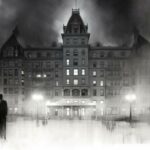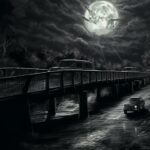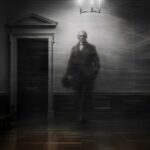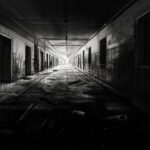Table of Contents
Austin, Texas, beckons the curious and the brave to explore its haunted places, where history’s echoes create an eerie yet captivating atmosphere. From the shadows of the city’s historic landmarks to the whispers in the corridors of old buildings, these sites offer a chilling adventure into the paranormal. Dare to discover the unexplained mysteries and ghostly tales that lie within Austin’s most haunted locales.
If you are doing any kind of paranormal investigation here, you might want to take a look at our ghost hunting equipment list. Locations like this get a reputation because they are high activity and you don’t need much to see for yourself.
Driskill Hotel
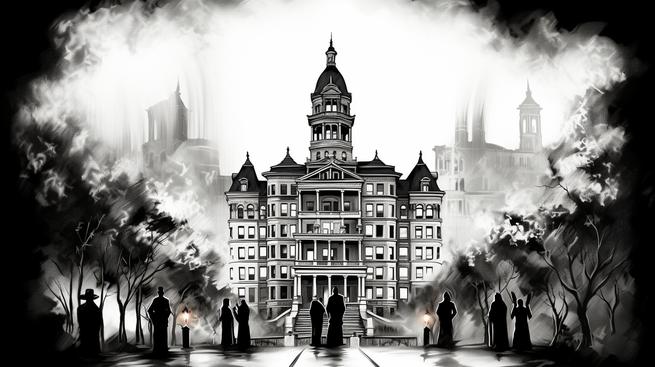
The Driskill Hotel in Austin, Texas, stands as a veritable hive of spectral activity, its walls echoing with tales of the afterlife. Built in 1886 by a cattle baron named Jesse Driskill, the hotel’s origin story drips with the so-called blood money, a fortune amassed during the dark times of the Civil War. Driskill, having lined his pockets with the spoils of war, sought to cement his legacy by erecting this grand edifice, which today bears his name.
Yet, as if cursed by its very inception, the hotel quickly became a hotspot for the supernatural. Jesse Driskill himself, overcome by financial ruin after squandering his wealth, supposedly lingers as a ghostly resident. His apparition, often puffing on a cigar, has startled guests and become a staple tale among the many whispered in the hotel’s opulent hallways.
The Driskill’s hauntings don’t stop with its founder. The story of the Bride sends shivers down spines, as the ghost of a woman who ended her life after a broken engagement reportedly haunts the room where she spent her final moments. She’s said to wander the corridors, a spectral figure weighed down by shopping bags from a spree that preceded her tragic end.
Adding to the hotel’s ghostly roster is the Child, a young spirit whose laughter echoes through the stairwells, a haunting reminder of a life cut short by a tragic tumble while chasing a bouncing ball.
One cannot overlook the unsettling presence of the fifth-floor painting. This artwork, a recreation of “Love Letter” by Charles Garland, allegedly captures the likeness of a senator’s daughter who died in a horrific accident within the hotel’s walls. Guests and ghost hunters alike claim the painting exudes an eerie aura, casting a pall over those who pass by.
The hotel’s connection to the afterlife even includes figures of historical significance. The spirits of former President Lyndon B. Johnson and his wife, Lady Bird, are said to grace the ballroom, reliving moments of political triumph and personal joy. Their spectral dance is a poignant echo of the past, forever imprinted on the hotel’s storied ballroom.
The Driskill Hotel remains a bastion of the haunted and a magnet for those seeking to brush shoulders with the otherworldly. Its walls don’t just whisper ghost stories; they shout them from the rooftops, making it one of the most haunted hotels in the United States. Whether it’s the weight of history or the echoes of the departed, the Driskill stands as a testament to the enduring nature of a good ghost story.
I stayed at the Driskill Hotel in Austin and couldn’t shake the feeling that old Jesse himself was watching over my shoulder, especially when I caught a whiff of cigar smoke with no smoker in sight. And let me tell you, walking past that painting on the fifth floor gave me the heebie-jeebies – it felt like the girl’s eyes were following me down the hall.
Littlefield House
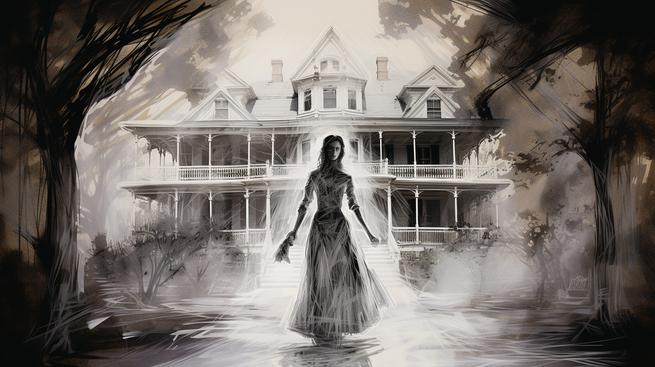
The Littlefield House, standing proudly on the University of Texas at Austin’s campus, is shrouded in tales of the paranormal that give the city’s history an eerie undertone. This Victorian-style mansion, a brainchild of architect James Wahrenberger, was brought to life in 1893, funded by the deep pockets of Civil War veteran, cattle magnate, and businessman George Littlefield.
George and his wife Alice became known as the cornerstone of the University of Texas (UT), their generosity as philanthropists paving the way for the institution’s growth. However, it is not just their philanthropy that keeps their names on the tip of the tongue; the Littlefield House, etched in the National Register of Historic Places, is also infamous for its supernatural resident.
The life of Alice Littlefield was a tapestry of talent and tragedy. A prodigy in the arts and languages, she possessed a magnetic charm that could draw anyone into her world. After marrying George Littlefield, the couple seemed to sail through a sea of contentment, until fate dealt a cruel hand. Despite losing two children in infancy, the Littlefields found solace in nurturing their extended family. However, at the age of 65, Alice’s life took a sharp turn as she succumbed to a mysterious “nervous condition,” plagued by dark visions and paranoia.
George, at his rope’s end, tried to find solace for Alice in a sanitarium, but his devotion tethered him to her side. “I would not think of leaving her with strangers,” he famously declared, choosing instead to care for her within the walls of their home. It was only after George’s death in 1920 that Alice managed to claw her way back to sanity, freed from the shackles of her delusions by the very loss of her beloved husband.
Alice lived out her days, returning to an active social life until her death in 1935. Buried beside George, her gravestone in Oakwood Cemetery stands as a testament to their love: “Beloved wife of George W. Littlefield.”
Yet, it seems Alice could not leave the Littlefield House behind. Her spirit is believed to roam the mansion and the dormitory that bears her name, her presence felt in unexplained chills and disembodied whispers. Students at UT have whispered about a guardian angel in the dorms, a spectral protector attributed to Alice’s lingering spirit. The mansion itself is a hotbed of paranormal activity, with visitors reporting eerie sensations and apparitions of Alice peering from the windows.
The most unnerving symbol of her presence is a portrait in the house that seems to watch over the living, Alice’s painted gaze following those who pass by. It’s as if the oil on canvas has trapped her soul, leaving her to forever survey her earthly domain.
In the heart of Austin, the Littlefield House stands not just as a historical landmark, but as a beacon for those who seek to brush with the otherworldly, its walls echoing with the whispers of the past.
I’ve heard folks say that if you wander near the Littlefield House at night, you might feel a chill or catch a glimpse of Alice Littlefield’s ghost peeking out from the windows, like she’s still keeping an eye on her old home. Some UT students even swear her spirit hangs around the dorm named after her, watching over them like a guardian angel.
Austin Pizza Garden
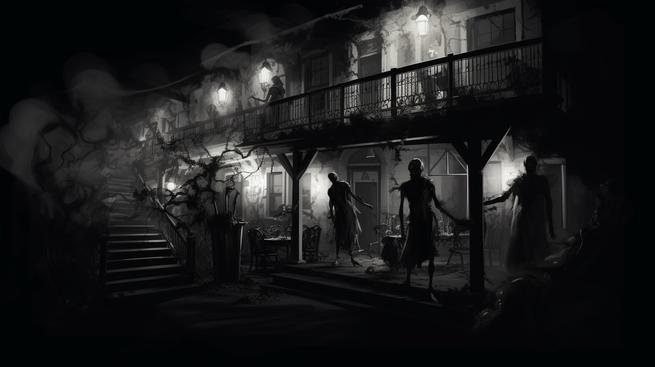
Nestled along West Highway 290, the Austin Pizza Garden boasts a storied past that stretches back to the days when Texas Rangers roamed the grasslands. The building, a venerable Texas Historical Landmark since 1970, has played host to an array of businesses over its 129-year history, from a general store erected by Texas Ranger James Andrew Patton to various incarnations as a post office, brewery, and even a seafood restaurant.
In more recent years, the Austin Pizza Garden has become known not just for its delectable pizza but also for the chilling whispers of its haunted reputation. The restaurant, a magnet for both the living and, some say, the spirits of the past, has been the scene of unexplained phenomena that have both spooked and intrigued employees and patrons alike.
The eerie incidents range from the mundane to the downright bone-chilling. Staff members tell tales of pizza-cutting tools spinning of their own accord and silverware inexplicably scattered across the floor. Some have even reported cold spots, disembodied whispers calling out their names, and a mysterious figure flitting through the stairwell. These occurrences often happen when someone is alone, lending an extra layer of creepiness to the already spine-tingling encounters.
One notable incident involved an apparition spotted by a young line cook, who described seeing a flesh-and-blood-looking being with auburn-brown hair clad in early 1900s attire. Another employee recounted feeling an electric jolt, as if touched by an invisible hand, leaving a rashlike mark on his skin.
The Texas Spirit Seekers, a group of paranormal investigators, took an interest in the Austin Pizza Garden, arriving with their scientific equipment to probe the mysteries swirling around the restaurant. Despite their best efforts, the investigation yielded more questions than answers. Although high levels of electromagnetic fields were detected, conclusive evidence of paranormal activity remained elusive.
Despite the lack of hard evidence, the stories of ghostly encounters continue to thrive, including accounts from customers who have had their own eerie experiences. The Austin Pizza Garden remains a place where the line between the past and present seems to blur, and the possibility of a haunting always seems to be just around the corner. Whether it’s the mischievous pranks of a resident ghost or mere tricks of the mind, the legend of this haunted pizza joint lives on, sending a shiver down the spine of anyone who dares to delve into its spectral lore.
I was chowing down on some killer pizza at Austin Pizza Garden when I swear I felt a cold breath on my neck, but no one was there – this place is totally haunted!
Oakwood Cemetery
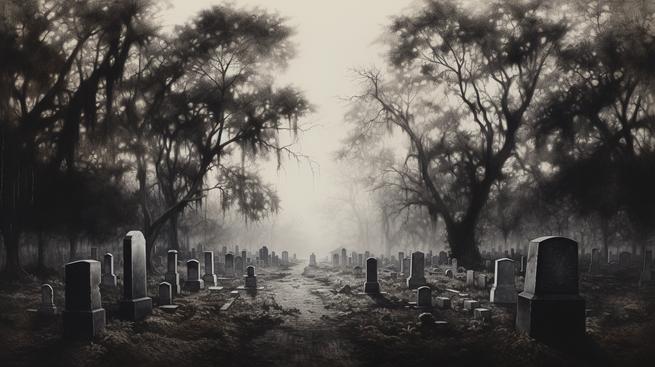
Oakwood Cemetery in Austin, Texas, stands as a testament to the city’s past, shrouded in tales of the supernatural and marked by a history of unsettling occurrences. This 40-acre burial ground, the oldest in Austin, serves as the final resting place for over 25,000 souls. The cemetery’s origin stretches into the mid-nineteenth century, with some believing its first burials were victims of a Comanche attack, possibly binding their spirits to the very hill where their lives ended.
The cemetery, originally known as “City Cemetery,” reveals a segregated layout that speaks volumes about the social stratifications of the past. The north section, referred to as the “colored grounds,” became the designated area for African-Americans, Latinos, and other non-white ethnicities. In contrast, the south side catered to those of non-black or Latino descent, with graves ranging from simple wooden crosses to elaborate monuments.
Rumors persist that Oakwood became a hotbed for paranormal activity due to its history of grave robbing. Medical professors purportedly exhumed freshly buried bodies from unmarked graves to provide cadavers for student dissections. This nefarious practice may have left the spirits of the disturbed dead to wander restlessly.
The northwestern fence line of the cemetery, close to Navasota Street and the unmarked pauper’s graves, is notorious for reported supernatural occurrences. Paranormal investigators frequent this spot, armed with EMF detectors and EVP recorders, seeking to capture evidence of the restless souls that many believe still linger there.
Heart-wrenching tales from Oakwood’s history remain, such as the story of Robert and Mable Tumey, siblings who succumbed to diphtheria and died within a week of each other. Their graves, marked and situated in the south section, starkly contrast with the unmarked and forgotten pauper’s graves by the cemetery’s fence line.
The turn of the 20th century saw Oakwood Cemetery expand and evolve. By 1907, it adopted its current name, and a mausoleum was added to the grounds by 1914. However, the Spanish Flu epidemic of 1918 overwhelmed the city of Austin, and hearses became a common sight, signaling a relentless march of death that led to the cemetery, where graves were hastily prepared to accommodate the soaring number of victims.
Oakwood Cemetery also houses the remains of notable figures such as Henry Green Madison, Austin’s first African-American City Councilman, and Dr. Annie Webb Blanton, the first woman elected to statewide office in Texas. The grave of John Barclay Armstrong, a formidable Texas Ranger known for his law enforcement exploits, adds a touch of notoriety to the grounds.
Visitors to Oakwood Cemetery are advised to respect the sanctity of the site and visit during daylight hours when the gates are open. For those with a penchant for the macabre and seeking to explore the cemetery’s haunted legacy, joining a ghost tour could provide a spine-tingling experience.
In summary, Oakwood Cemetery’s storied past, rife with tales of segregation, grave robbery, and disease, has cemented its reputation as one of Austin’s most haunted locales, where the veil between the living and the dead seems to be at its thinnest.
I heard that if you hang around the old fence line by Navasota Street at night, you might catch whispers or see shadows moving, ’cause that’s where they say the forgotten souls still wander. They say those graves got messed with way back, and now those spirits don’t rest easy.
Metz Elementary School
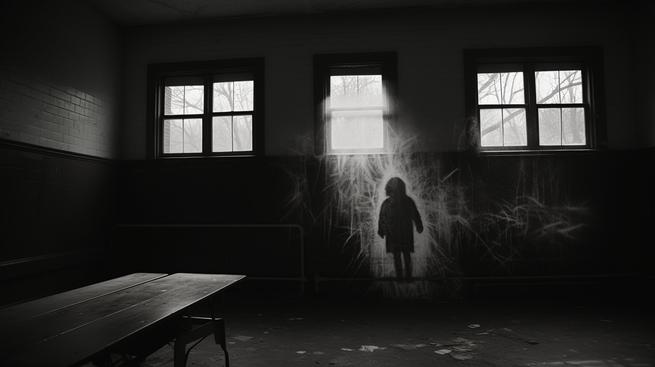
In 1990, as the walls of Metz Elementary School in East Austin were set to come down, the whispers of the past began to echo louder than the rumble of demolition machinery. Opened in 1915, the hallowed educational grounds had weathered many a storm, but safety concerns sealed its fate, prompting the Austin school district to strip it to the studs.
Torres Trucking and Excavation took on the task, but the straightforward job soon hit a supernatural snag. Workers on-site started to report eerie occurrences. One laborer’s blood ran cold when he caught sight of a spectral boy peering from the bathroom window. The empty halls, devoid of life, were inexplicably filled with the sound of children’s laughter and the screech of chalk on non-existent chalkboards. Cryptic drawings appeared on the walls, as if an invisible hand guided the chalk.
Joe Torres, the head of the demolition crew, faced his own unnerving experiences. His brand-new watch ceased to work whenever he set foot on the property, and the bulldozers, which should have made light work of the demolition, began to falter inexplicably. Torres, a man not usually swayed by superstition, couldn’t help but feel the weight of the unseen as he walked through the building, musing to himself, “if these walls could talk.”
In a bid to cleanse the site, Elias Limon from Casa Guadalupe Catholic Center was called in, wielding holy water and a prayer book as his weapons against the unseen. He beseeched the restless spirits to depart, his words floating through the air like a protective shroud. His efforts allowed the demolition to proceed, but rumors suggest that his prayers were a mere Band-Aid on a wound that would not heal.
Today, despite the renovation, the campus remains a hotbed for tales of the paranormal. The ghostly giggles and phantom footsteps continue to haunt the halls of the newly rebuilt Metz Elementary, a testament to the idea that some spirits refuse to be buried, even under the rubble of progress.
I was helping tear down the old Metz Elementary and, man, it got creepy—saw a ghost kid in the window and heard laughing when no one was there. Even after bringing in a priest and all, that place still gives me the chills.
The Clay Pit
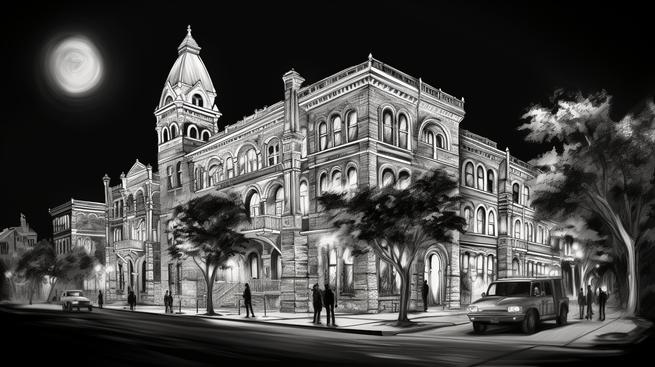
In the heart of Austin, Texas, The Clay Pit serves not only a feast for the senses with its acclaimed Indian cuisine but also a banquet of spectral stories. Housed within the historic Bertram Building, this culinary destination shares its space with echoes of the past, turning the restaurant into a hotbed for ghostly encounters.
The Bertram Building, a stone’s throw from the State Capitol, began its story as a trading outpost where Native Americans and settlers exchanged goods. German immigrant Rudolph Bertram, the mastermind behind this enterprise, eventually expanded the structure into a bustling grocery and general store, complete with a saloon. The Bertram family resided upstairs, unknowingly setting the stage for future ghostly tales.
Whispers abound of a labyrinth of underground tunnels beneath the building, once a conduit to nearby brothels, shrouded in secrecy to protect the reputations of their esteemed clientele. It’s even rumored that one of these shadowy passageways reaches all the way to the State Capitol. But the secrets don’t stop there; the building’s basement once concealed Texas’s gold reserves, safeguarded within its wine cellar—a veritable Fort Knox beneath the city streets.
The Bertram legacy is marred by tragedy, as five of the family’s eight children succumbed to illness, leaving a trail of sorrow that some believe lingers to this day. Among the spectral residents, the young Bertram son, who perished from typhoid fever in isolation, is said to frequent the very room where he spent his final moments. Now known as the Bombay Room, staff report chilling encounters, from playful tugs to mournful sightings of the boy’s apparition.
A more sinister presence stalks the premises, the restless soul of a “Scarlet Lady,” a prostitute whose life met a brutal end in the building’s basement. Employees recount eerie whispers and ghostly caresses, attributed to her seeking vengeance or perhaps a sliver of justice from beyond the grave.
Amidst the clinking of cutlery and the aroma of spices, the Clay Pit’s patrons and staff might sometimes catch the phantom sounds of revelry from the floor above—or perhaps it’s just the mischievous spirit of the young Bertram, eternally seeking playmates among the living.
To dine at The Clay Pit is to break bread with history, where every corner tells a tale and every shadow could harbor a ghost from Austin’s storied past.
I heard that at The Clay Pit in Austin, the ghost of a little boy who died long ago likes to play tricks upstairs, and some say a ghostly woman from the building’s darker days wanders the basement, giving folks the chills.
Buffalo Billiards
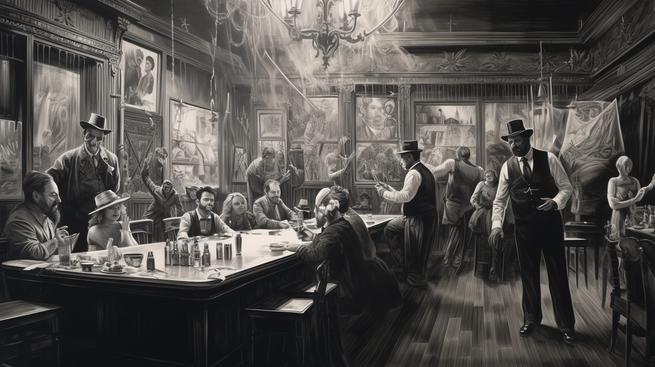
In the heart of Austin, Texas, Buffalo Billiards stands as a testament to the city’s colorful and occasionally spectral past. Opening its doors in 1861, the establishment first served as a hotel and boarding house known as the Missouri Hotel, operated by the Ziller family. However, beneath the surface of this seemingly innocuous establishment lurked a tantalizing secret; the building was rumored to double as a brothel, drawing in cowboys, outlaws, and gentlemen seeking clandestine thrills.
As the Wild West era thrived, so too did Buffalo Billiards. The establishment became an anchor for the burgeoning town, a place where most roads led not just for a stiff drink but for the company of women who ran the saloon. These women, often dismissed by history, were in fact the architects of the West, pouring their earnings into the town’s infrastructure, erecting schools, stores, banks, and even churches, effectively planting the seeds for the community’s future.
The building itself, a cornerstone of Austin’s development, has weathered the storms of prohibition and war, always providing a sanctuary for those seeking respite. Today, Buffalo Billiards is known less for its historical role in Austin’s expansion and more for being a spirited watering hole where the past and present collide—a place where the living come to unwind and the dead, it seems, refuse to leave.
The most renowned spectral resident of Buffalo Billiards goes by the name of Fred. This ghostly figure has become something of a local celebrity, notorious for his mischievous antics which include unstacking chairs, tampering with drinks, and giving unsuspecting patrons a tap on the shoulder. Staff and regulars have come to view Fred not as a malevolent spirit but as a playful mascot of sorts, even going so far as to pour him a shot each day to keep the peace.
Fred’s fame reached new heights when Fox News caught wind of his shenanigans, leading to a media frenzy that would cement Fred’s status as an incorporeal icon of Austin. During an interview with Monica Ballard from Austin Ghost Tours, a faint voice was captured on the microphone—an Irish accent requesting a “wee bit of attention,” sending chills down the spine of the technician reviewing the footage.
Buffalo Billiards remains a vibrant part of Austin’s nightlife, its walls echoing with laughter, clinking glasses, and perhaps the whispers of those who once called it home. It’s a place where history is not just remembered but felt, where every creak and groan of the floorboards tells a story, and where Fred—ever the attention seeker—continues to remind patrons that some guests never truly check out.
I was hanging out at Buffalo Billiards, sipping my drink, when something unseen tapped my shoulder – turns out it was Fred, the playful ghost that likes messing with folks in this old Austin haunt. Everyone says he’s just part of the charm, and they even pour him a shot to keep him happy.
Shoal Creek
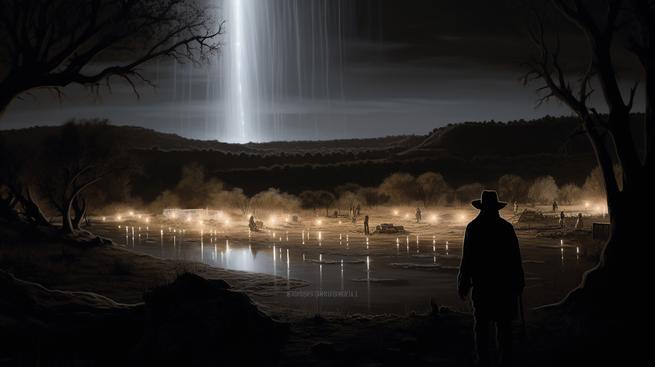
Shoal Creek, a seemingly tranquil stream winding through Austin, Texas, harbors a tumultuous past that resonates with the echoes of its Wild West heritage. The creek’s banks, blanketing over 12.9 square miles, whisper tales of savage deeds and ghostly encounters, making it a magnet for those who dare to delve into its esoteric history.
The area, strewn with arrowheads, tells a silent story of ancient Native American tribes whose disputes date back to 9000 BC. An archaeological hotbed, a particular site near Old McCall Spring, once an indigenous burial ground, speaks volumes of the region’s deep-rooted history.
In 1838, settlers from the Dewitt Colony, Austin’s predecessor, took up residence by the creek’s mouth, among them Mirabeau Lamar, the second president of the Republic of Texas. These pioneers faced relentless threats from Comanche warriors, resulting in many untimely deaths.
The post-Civil War era brought General George Armstrong Custer and his troops to the banks of Shoal Creek. Tasked with enforcing Reconstruction mandates, they too succumbed to the area’s harshness, many falling victim to cholera and finding their final resting place beside the creek.
The lure of a Spanish Treasure in 1890 transformed the creek into a frenzied hunting ground, leading to a wave of home invasions and violent confrontations. The infamous “Split Rock,” nestled between 29th and 31st street, became a haven for outlaws, further entrenching the creek’s sinister reputation.
Then, in 1956, a series of cottage fires set by an unknown arsonist added another layer of mystery to the creek’s enigmatic presence.
However, the most chilling chapter in the creek’s history is undoubtedly the Shoal Creek Indian Massacre. In 1839, despite ominous warnings, Gideon White chose to settle on the creek’s edge. His homestead would become the stage for a horrific event that would seal the creek’s haunted legacy. Three years later, in 1842, White and his family were found brutally murdered, believed to be the work of passing Native Americans.
When neighbors began to bury the Whites, they uncovered a mass grave beneath their feet, an ominous reminder of those who had perished before, many to disease, but some marked by violence.
Today, Shoal Creek stands as a nexus of paranormal activity, with a trail that closes before 10 PM, allegedly for safety but rumored to be due to the area’s supernatural occurrences. Documentaries and YouTube videos abound, attempting to capture the restless spirits said to roam the creek.
Visitors report cold spots in the summer heat, enigmatic Marfa lights, vanishing apparitions, and nocturnal shrieks. Some leave carrying nightmares of entities that follow them home or fall prey to unexplained illnesses.
Among these spirits, Gideon White’s presence is the most potent, his moans and cries witnessed by countless visitors, solidifying Shoal Creek’s status as a haunted haven for those who seek to encounter the spectral remnants of Austin’s eerie past.
I was walking by Shoal Creek one evening when I felt this sudden chill, and out of nowhere, I swear I heard someone crying, like the ghost of old Gideon White was still out there, mourning. It creeped me out so bad, I ran all the way home and didn’t look back once!
Victory Grill
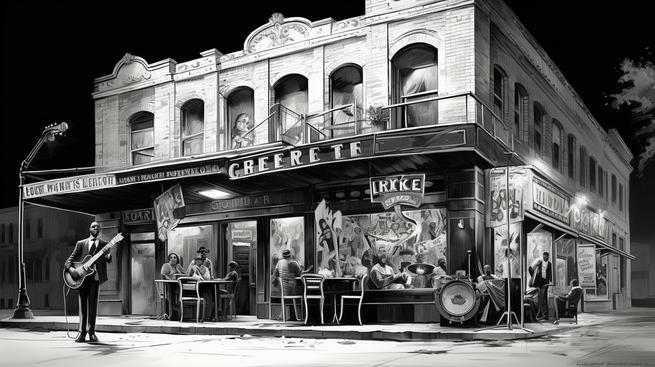
In the heart of Austin, Texas, the Victory Grill stands as a monument to the city’s vibrant musical past. Founded in 1945 by Johnny Holmes, a visionary with a dream to create a haven for Black soldiers returning from World War II, the Victory Grill quickly became the cornerstone of the Chitlin’ Circuit, a network of safe venues for African American musicians during the era of segregation.
The walls of the Victory Grill have absorbed the soulful sounds of blues and jazz legends, with greats like B.B. King and Billie Holiday gracing its stage. The grill’s legacy is a tapestry woven with threads of triumph and tribulation, echoing the struggles and successes of the artists who found a voice within its hallowed halls.
The tales of the past still haunt the venue, where the echoes of guitar strings and the ghosts of rhythm still dance in the air. It’s said that the spirits of bygone stars linger, yearning for the limelight and the roar of the crowd. The Victory Grill, more than a building, represents the soul of Austin’s music scene, a synecdoche for the city’s cultural heartbeat.
The storied venue experienced its share of hard knocks, including a devastating fire in 1988 that threatened to silence its music forever. But like a phoenix rising from the ashes, the Victory Grill was resurrected, its spirit unbroken. It remains a place where music lovers can still catch a glimpse of the past, feel the pulse of history, and maybe, just maybe, hear the whispers of legends who once stood on its stage.
Today, the Victory Grill is a touchstone for those seeking to connect with Austin’s musical roots. It’s a place where the past shakes hands with the present, and the fabric of history is embroidered with the notes of every performer who ever played a set under its roof. The Victory Grill’s haunted history is not one of spectral fears, but of enduring presence, a haunting reminder that here, music never dies—it just evolves.
I heard that late at night in the Victory Grill, you can catch the ghostly hum of blues legends tuning up, like they’re getting ready to play a set that’ll raise the roof off the place. It’s like the old greats just can’t quit the stage where they once shined.
Moonshine Grill
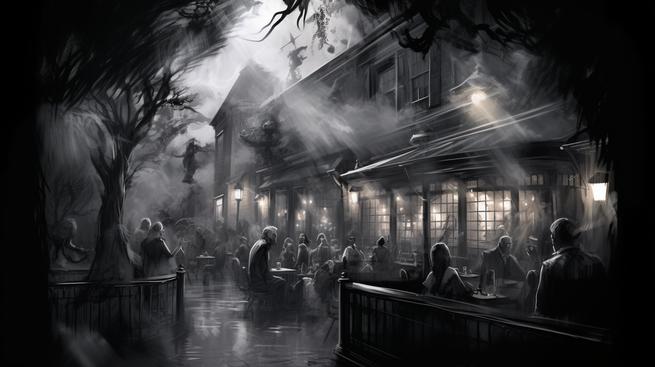
The Moonshine Patio Bar and Grill in Austin, Texas, stands as a beacon for those with a penchant for the paranormal, its storied walls echoing with tales of spectral encounters. Tour guide Monica Ballard has been known to lead curious souls through this establishment, unraveling the chilling narratives that shroud the building like a dense fog.
Nestled in the heart of Austin, the Moonshine Grill’s foundation dates back to the mid-1850s, making it a venerable treasure chest of history and hauntings. The ghosts that inhabit its space are as much a part of the Grill as the bricks and mortar themselves. Patrons and staff alike have reported eerie occurrences that would make even the staunchest skeptic’s hair stand on end.
One such tale involves the unseen inhabitants who seem to playfully interact with the living. Glasses have been known to move of their own accord, and the air often carries the whispers of voices from an unseen crowd. It’s as if the spirits are toasting to eternity, unwilling to let the revelry die.
The Moonshine Grill doesn’t just serve up comfort food and cocktails; it dishes out a side of supernatural that has become the talk of the town. It’s a place where the past and present collide, making it a must-see for anyone looking to add a ghostly encounter to their order.
For those brave enough to explore the haunts of Austin, the Moonshine Patio Bar and Grill is a jewel in the city’s ghostly crown. It’s a spot where one can rub elbows with history, and if you’re lucky—or perhaps unlucky—catch a glimpse of the specters that call it home. The spirits of the Grill are not just whispers in the wind; they are the life of the party that never ends, eternally etched into the essence of this historic haunt.
I was chowing down on some ribs at Moonshine Grill when my glass slid across the table all by itself – gave me the heebie-jeebies, like someone unseen was angling for a sip.
The Tavern
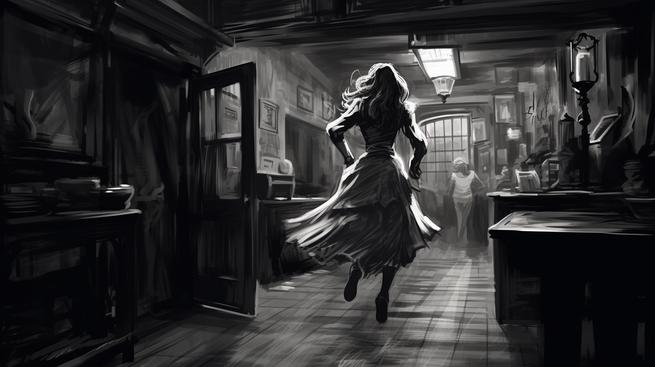
The Tavern in Austin, Texas, harbors a haunted history that has become as much a part of its identity as its century-old walls. Locals whisper about Emily, the resident ghost, who has etched her presence into the fabric of this storied establishment. Legend has it that Emily regards The Tavern as her original home and playfully asserts her claim by engaging in ghostly antics.
Emily’s spectral tenure at The Tavern is one for the books, with patrons often reporting a series of unexplained occurrences. Some guests have felt an invisible tap on the shoulder or a sudden pinch, while others speak of a chilling sensation of being watched by an unseen observer. The upstairs area, in particular, is a hotbed for her mischief, where the echo of phantom footsteps and the sounds of an invisible pool game send shivers down the spine of those who listen closely.
The ghostly activities are not limited to subtle pranks; there have also been sightings of hazy apparitions and inexplicable cold spots throughout the venue. Even the modern technology isn’t immune to Emily’s touch, with TVs reportedly turning on and off without any mortal hands at the controls.
During a renovation in 2003, workers stumbled upon what are believed to be Emily’s shoes, hidden within a crawlspace in the walls, further cementing her story into The Tavern’s legacy. These unearthed relics became pieces of the puzzle in the long-standing mystery of Emily’s existence and her connection to The Tavern.
The Tavern’s owners, embracing the spine-tingling allure, have even turned Emily’s story into an interactive experience. The murder-mystery dinner theatre, titled “The Haunting of the Tavern,” features none other than owner Shannon Sedwick in the role of Emily, bringing the ghost’s tale to life for those who dare to partake.
Whether visitors are skeptics or believers, the ghostly lore of The Tavern adds a layer of intrigue to this historical watering hole. The tale of Emily, the lingering spirit, remains a cornerstone of conversation and a draw for the curious, ensuring that The Tavern’s haunted history continues to captivate the hearts and imaginations of Austinites and visitors alike.
I heard that The Tavern in Austin is haunted by a ghost named Emily who loves to mess with folks, like turning TVs on and off and leaving you feeling like someone’s watching you when no one’s there. It’s pretty spooky, especially when you’re upstairs and you can hear what sounds like someone playing pool, but no one’s around.
Texas State Capitol
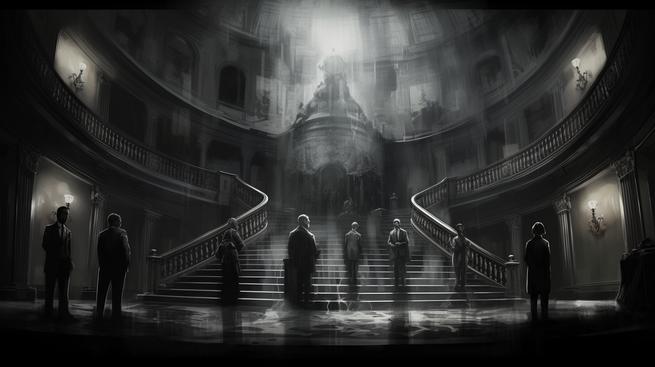
The Texas State Capitol in Austin, TX, stands tall with its imposing structure and a history that sends shivers down the spine. Towering at 302 feet, it surpasses even the United States Capitol in height, but it’s the eerie tales of its spectral inhabitants that truly set it apart. The building is infamous for its ghostly encounters, earning the title of the Most Haunted Capitol in the country.
One of the most notorious ghosts is that of Robert Love, a former State Comptroller whose life met a tragic end within the Capitol’s walls in 1903. Love’s murder at the hands of William G. Hill, an embittered ex-employee, marked the beginning of his afterlife haunting the Capitol. Hill’s disgruntlement was laid bare in a letter he handed to Love, condemning the perceived injustices within the Capitol, before turning a gun on Love and then accidentally on himself.
Despite the violent nature of his death, Robert Love’s spirit is said to be quite the gentleman, often spotted in a suit and top hat. However, his presence is not without a chilling touch, as he prefers to communicate with those who wander the halls alone, recounting his bewildering final words, “I have no idea why he shot me. May the Lord bless him and forgive him. I cannot say more.”
Another unsettled spirit is the mysterious lady in red, an unidentified young woman whose apparition lingers on the stairwells, as if in eternal wait for a lost lover. Additionally, some visitors report encounters with the intimidating phantom of Governor Edmund Jackson Davis, whose piercing gaze and ability to alter the temperature leave a lasting impression on those who cross his path.
The Capitol’s haunted reputation is not just about individual specters but also the building’s storied past. Erected on a foundation of ambition and grandeur, the Capitol began as a humble log cabin in 1839, transforming over the decades into the architectural masterpiece seen today. Architect Elijah E. Myers won the national competition to design the new Capitol, and despite a fire threatening the plans in 1881, the building was completed by 1885, surrounded by a majestic twenty-two-acre compound.
The Capitol’s cornerstone, laid with much pomp and circumstance on March 2nd, 1885, contained relics of the time, signifying the building’s importance as a keeper of history. A week-long celebration marked its opening in 1888, with Senator Temple Houston famously declaring that “the architecture of a civilization is its most enduring feature, and by this structure shall Texas transmit herself to posterity.”
Over time, the Capitol indeed became the People’s Park, a place beyond politics, adorned with fountains, lakes, and exotic flora. The turn of the century saw further beautification, but by the 1990s, the signs of age necessitated restoration. The State Preservation Board took on the task, breathing new life into the grounds with modern enhancements while honoring its historical essence.
Amidst tales and legends, including rumors of buried Confederate gold and the misattributed crack caused by Ed Wheeler’s tragic fall, the Texas State Capitol stands today as a beloved icon of American architecture, ranked as the Number One Capitol in the country by the American Institute of Architects in 2008.
For those brave enough to explore the haunted history of this landmark, the Texas State Capitol at 1100 Congress Avenue offers daily tours, free to the public. And if the walls could talk, they’d have centuries of ghostly tales to tell.
I heard the Texas State Capitol is super haunted, especially by a ghost named Robert Love who got shot there. People also talk about a spooky lady in red who hangs out on the stairs, waiting for someone who never shows up.





